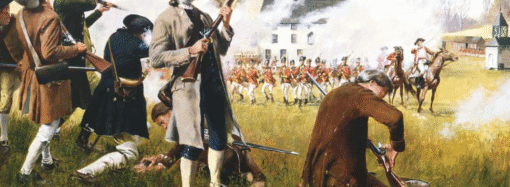The worst American campus violence since my college days at the University of Michigan in the late 60s and early 70s begs the question: Why? It’s not just the violence at places like Berkeley and Middlebury, but also students’ increasingly aggressive demands to keep conservative speakers away, create safe spaces, publish trigger warnings, and protect themselves from microaggressions. After 50 years of endlessly ridding ourselves of biases, instituting cultural studies programs, and parroting the diversity ethic through every campus fiber, sinew, and organ, why are students protesting with greater vigor than any time since those famed years?
I neither jeer (“those snowflakes”) nor do I defend free speech. Christian graces disdain the former, and, while I fully embrace the latter, it is underwritten by a thin moral vocabulary that is the best secular policymakers can offer. To discover a substantive answer to our question about campus violence, we will explore five basic explanations, with hints of truth in each. The most plausible explanation points to students’ postmodern guilt spilling over in moral outrage. The situation, as I also suggested several years ago with respect to campus trigger warnings, cries out for the redemption and forgiveness only found in Christian faith.
1. The first explanation for today’s campus violence is that today’s college students are psychologically frail due to their coddled upbringings. Fragile students are psychologically needy, for all sorts of reasons (such as helicopter parents who do their grown children no favors by shielding them). Some ask “Why am I so privileged while others struggle?” but this doesn’t explain how psychologically frail Middlebury students became so crazed with violence (in the name of peace and social justice, mind you) that author Charles Murray feared for his life on their campus.
2. As a second explanation, the old standby perennial youthful idealism appeals to a timeless aphorism: When young, unless you are liberal you have no heart, and, when older and mugged by reality, unless you are a conservative you must have no mind. But why the explosion of youthful idealism now?
3. Virtue signaling is the third explanation. The term du jour refers to a “conspicuous expression of moral values by an individual done primarily with the intent of enhancing that person’s standing within a social group” (Wikipedia). Students demonstrate they are on the right side (morally speaking) of history by protesting whatever contradicts the zeitgeist’s moral norms. My white neighbor (a retired academic) in a genteel Twin Cities suburb proudly displays a Black Lives Matter sign, no doubt signaling that he and his spouse eschew the Chief Sin of White Americans. Likewise with students who march in support of social justice movements. Yes, to be human is to crave social approval, but we need some other prods to make us coercive and violent in service to that end.
4. With the fourth explanation, postmodern thought, we are nearing the scent of a credible explanation for campus violence. Having abandoned modernity’s confidence in reason but not its devotion to the belief that we humans can solve our problems absent God, the postmodernist substitutes the search for truth with social justice activism that seeks to rectify historic power imbalances. Postmodern academics have virtually conquered the social sciences and humanities for the better part of the past quarter century, weaving ever more elaborate guilt-inducing intellectual tapestries like white privilege and unconscious racism. While the analysis of power dynamics has value, the true torture here is that, unlike the Christian narrative of a savior who suffers for sin, postmodernism condemns sinners (those from the majority culture) who then atone for their sins by inflicting violence on those deemed unjustly powerful (especially Western white Christian men).
5. What catalyzes the power of postmodern thought is the fifth explanation for campus violence in our 21st century: moral outrage (righteous anger over real or apparent injustice) as compensation for personal guilt. Here we discover the power of research, combined with the Christian story, that makes moral outrage an especially plausible explanation.
Consider, for example, the recent work of historian and social critic Wilfred McClay, cited in a recent article by the New York Times’ David Brooks. In a brilliant Hedgehog Review piece entitled “The Strange Persistence of Guilt,” Professor McClay affirms Freud’s claim that guilt is an irremovable setpiece of emotional furniture that haunts modern human beings, quite in contradistinction to Nietzsche who thought that the death of God would destroy the reason for guilt. On campuses that long ago dispensed with moral relativism and replaced them with a 21st century version of moral legalism, postmodern ideas of white privilege and guilt fester in students’ souls. Tied together with a real but sublimated sense of guilt over abortions, premarital sex, drug use, and the host of traditional campus sins, weary students struggling with postmodern moral legalism have few soul-easing outlets. They either plunge into depression or find some other way to atone for sins, real and imaginary. McClay: “With moral responsibility comes inevitable moral guilt, for reasons already explained. So, if one wishes to be accounted innocent, one must find a way to make the claim that one cannot be held morally responsible.”
McClay argues that victimization nicely fits that bill (and it does, especially for those from so-called victimized groups), but for others the strategy of moral outrage, whereby one becomes an advocate for perceived victims, is the root of much of our campus violence. On their (the victims’) behalf, majority-culture students inflict violence on powerful sinners (i.e., those who dare to question or challenge postmodern orthodoxy and/or embody power). By doing so, students atone for their guilt (real and imagined) while also satisfying themselves that the powerful are made weak and the weak made powerful. The narrative draws just enough fragments from the Christian narrative to make it plausible and thus all the more dangerous, precisely because it lacks a voluntary sacrifice on behalf of unworthy sinners.
From the social sciences comes further research confirming the plausibility of our moral outrage explanation. Research detailed in the April 2017 edition of the journal Motivation and Emotion finds that people become righteously angry over real or apparent moral outrages because they are filled with a sense of guilt. They do so in order to somehow idealize themselves as righteous, and thus set their psyches at ease. The righteous person discovers a new moral balance, a re-assurance that they are alright, after all. Once again, we see that the strategy of moral outrage—a strategy of the postmodern quest for social justice— consistently depends upon inflicting pain on a third party in defense of a perceived innocent second party. By contrast, the Christian gospel atones for sin by making the innocent third party atone for both of the guilty first and second parties.
Having evicted the Christian narrative from higher education, higher education has lost the redemptive narrative that formed the most reliable basis for personal forgiveness and social reconciliation, let alone the basis for epistemic humility. Abandoning the Christian narrative has come at a higher cost to higher education than most people realized at the beginning of the secularization of higher education a century and a half ago.
Postmodern ideas of social justice married to modern sins cry out for the premodern, timeless Gospel of Christ. Not only is there real forgiveness at the foot of the Cross, but also entry into His Church where themes of a redeemed culture and creation simultaneously salt, sweeten, and savor a narrative that still has power to transform social and psychological realities. Whereas the Christian finds righteousness and forgiveness through the imputed righteousness of Christ (II Corinthians 5:21), the sensitive postmodern soul without Christ is left with either guilt, leading to depression (internalized violence) or moral outrage, which externalizes violence in order to also right a social wrong. So, instead of Christ as one’s substitute, the student earns her salvation, so to speak, by violence against others who are perceived to be unjust.
And so, rather than seeing today’s campus violence as an attack on freedom of speech, we should understand that our campuses are filled with students carrying unatoned guilt, real or otherwise. They may lack the vocabulary for or the category called sin, but they feel morally responsible for their privileged upbringing in a world seething with apparent racism and injustice and the powerlessness of the weak. After all, their professors tell them that it is so. And to boot, many have the personal sins by which college students over the ages have long cultivated a sense of personal guilt.
So, our problem, after all, is religious, as Jonathan Haidt discusses so perceptively in The Righteous Mind. As guilty persons, we can either embrace the violence done to Jesus as our atoning sacrifice, become depressed and thus internalize violence against ourselves, or undertake righteous violence against others in order to seek freedom for our guilt-ridden souls.
Is it time for a vigorous renewal of Christian thought on campus? For the sake of our students, whose hope of secular redemption lies in violence against others (or internalized depression), it cannot come too soon.
—
This article is republished with permission from Robert Osburn and the Wilberforce Academy.
Image Credit: Fibonacci Blue via Flickr bit.ly/1ryPA8o
















Leave a Comment
Your email address will not be published. Required fields are marked with *